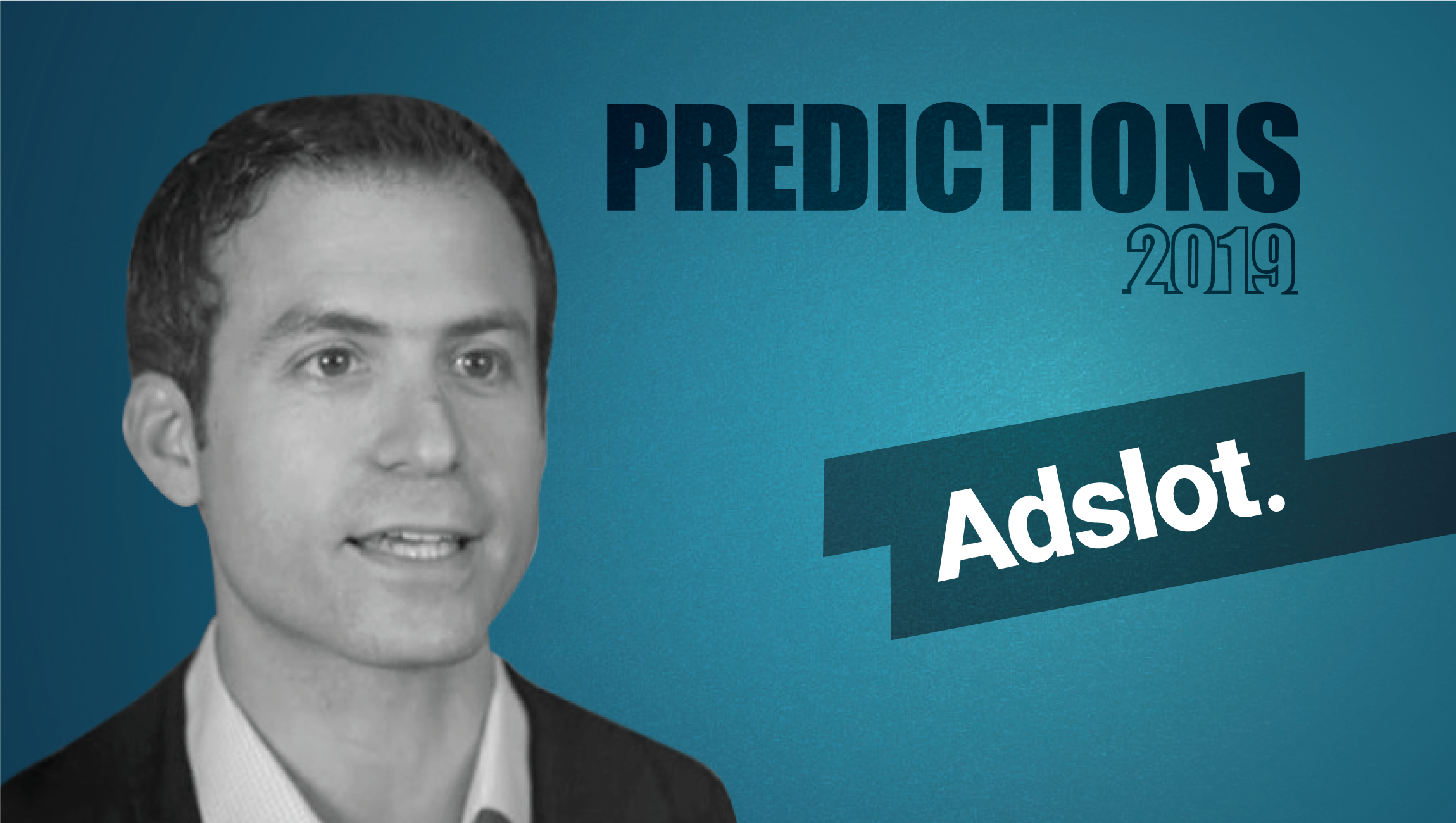Cary, tell us about your role at Adslot and the team/technology you handle.
Adslot Media is the world’s only independent technology that scales audience-enabled, publisher-direct media buying. Through our technology you can plan, buy, optimize and reconcile your premium, guaranteed campaigns through a single platform.
The North American team services premium publishers and advertisers by leveraging the Adslot platform to simplify their buying and selling of guaranteed, premium display and video inventory across all screens. The Adslot platform is a purpose-built technology that automates publisher-direct insertion orders (IOs) and includes a collaboration tool, similar to the Bloomberg terminal for the finance industry or Slack for project teams. Buyers collaborate directly with their preferred salespeople from the publishers they wish to work with and use the Adslot platform for the end-to-end experience; from planning, forecasting, briefing, negotiating, booking, sending creative tags, monitoring campaign performance, optimizing, reconciling and billing. It all happens in one centralized platform, saving hours of mind-numbing work previously done in email and pivot-tables. The Adslot platform works directly with the publisher’s ad server and does not handle any biddable media. Offering this direct connection reduces the number of middlemen and therefore has operational and commercial benefits compared to similar technology.
What was the most impactful event/moment of the year for you in 2018 (specific to your industry and expertise)?
For Adslot, 2018 saw the culmination of a multi-year project with our first-party data targeting product, Audience First, which brings addressability to upper-funnel digital media. Not only can buyers see availability of their first-party data with premium publisher-direct inventory, but they can easily plan, collaborate and book a multi-publisher, direct campaign in one platform. It’s very gratifying to see our customers sending Adslot their CRM and DMP data, and using it to forecast and book IOs with premium publishers on inventory that they don’t make available in programmatic pipes such as sponsorships, roadblocks and pre-roll video.
What developments have you seen in the ad tech space in the last 12 months?
There hasn’t been any watershed technological disruption in 2018, but more so that the industry participants have become more and more educated on what these technologies of the past decade are, and how to evaluate their worth. In other words, the illusion that an advertiser can use an auction to buy a steak for the price of a hamburger has been dispelled.
A lack of transparency has created misaligned commercial incentives for many of the technology vendors and platform operators. We saw this come to a boiling point in 2017, with nightmare brand adjacency problems, as well as P&G’s Marc Pritchard rightfully calling on the industry to clean up the opaque commercial supply chain. Most of these unsavory practices winded down last year as the largest advertisers audited their supply chains and demanded commercial transparency.
How is the publisher-direct media buying relationship different today than when you first started at Adslot?
In the last few years we’ve seen a shift in organizations where buying teams are far more integrated between programmatic and publisher-direct. This is a powerful design as the needs of the client can be more holistically addressed when the upper and lower funnel planning and activation teams are sitting at the same table.
What do you see as the key ingredients for a successful bespoke digital ad campaign?
It’s simple: 1) The right audience 2) in the right context 3) with impactful ad products 4) and relevant messaging.
- Start with the best data you can get your hands on, either your own first-party data or the publishers’ first-party data. Or perhaps, you work with a savvy data provider who can make bespoke audiences off a seed such as your CRM file, super-fans or influencers.
- Involve your trusted publisher partners as early in the conversation as possible. They know their audience better than anyone else and are an asset to you as a marketer.
- Let the media company do what they’re great at. Suggest high-impact, often proprietary ad units such as Conde’s Crown Unit or Vox’s Athena.
- Create relevant and meaningful creative that can be delivered at the right moment. Go the extra mile to be relevant and you’ll be rewarded with improved performance.
We’ve heard leaders in the space like Bank of America’s Lou Paskalis refer to this process as “Mindset Marketing.” This will help create a connection between you and the consumer with the ultimate goal of trust and loyalty.
Iterate by collecting data on the impression, where allowed, which you can then feed into your DMP’s cycle of collect, organize, activate.
Tell us about your vision into programmatic advertising landscape?
The main advantage of digital media over its traditional counterparts is having a real-time, two-way signal, whereas traditional is only a one-way transmission. This bi-directional construct is the “big data” component of audience addressability. However, most programmatic relies solely on this data addressability at the expense of context and relevance.
Audience data and scale are programmatic’s strengths. Relevant context, engaged audiences and high-impact ad products are the benefit of having a great partnership with trusted premium publishers. We are seeing the real results of combining these previously bifurcated constructs through purpose-built collaboration technology.
One example is a client who has 30 percent market share in their respective industry and looks to acquire customers via a subscription model. By suppressing their CRM file in Adslot, they reduce media waste by 30 percent. This reduction of media waste allows them to reinvest more heavily in the upper funnel knowing that they aren’t burning cash. They’ve seen conversion literally double when the user is exposed to these high-impact activations. It becomes a virtuous circle. They increase conversions while saving double-digit media costs, which then get reinvested into the upper funnel to produce more conversions. This increases the suppression file by constantly getting more and more refined. That’s smart advertising.
What are the main issues you feel advertisers face in 2019, and how is Adslot helping to tackle them?
In digital media, we’ve seen the largest advertisers shift toward conscientious investment that audits the media supply chain to maximize working media while reducing tech tolls, fraud and intermediaries. Adslot aligns with this trend by employing the real estate commercial model where buyers don’t pay any tech fees. The seller underwrites the technology and receives full transparency. This eliminates the block box of tech tolls, while reducing the number of intermediaries and budget cannibalization.
How do you see Machine Learning and programmatic technologies converging in 2019?
Machines are good for crunching data and increasingly good at bubbling up insights. If humans design rules for the machines, the machines can automate activation. If humans design rules for creating rules, then the machines can apply human-oriented logic to continue to iterate. The advancements in machine learning will help execute more campaigns that are personalized for subsets of the full target audience and take customers through a touch-point journey.
How will Machine Learning change the way marketers deliver a unique user experience?
If you can more dynamically respond to signals that drive outcomes, you will ultimately be more relevant to the user. The goal is to exhibit the human grace and etiquette of a one-to-one conscious dialogue, but at scale.
What do you see for the future of personalization in programmatic buying and native advertising?
Where this starts to get interesting is in the ability to personalize creatives based on the data of the user. The concept is going from one-size fits all (but actually fits no one) to many sizes and eventually bespoke made jackets.
What are the key trends you see developing for 2019?
As the commercial supply chain get cleaner, it becomes easier to analyze the incrementality of a marketer’s media and technology stack. This will enable increased collaboration between all the constituents to serve the advertiser’s needs.
The other key trend is the impressive rise of the direct-to-consumer (DTC) economy. Randall Rothenberg‘s presentation at last year’s IAB Annual Leadership Meeting was a wake-up call as to what’s possible.
Tag a person you would love to hear from in this space –
Cary Dunst is responsible for developing and driving Adslot’s business strategy across the North American market. Dunst is a seasoned senior executive who has been in the tech sector for nearly 20 years, the last 10 focused on Martech, Data, and Analytics solutions. Most recently Dunst was the Vice President of Sales – North America for Lotame, the leading independent data management platform used by marketers, agencies and publishers globally.

Adslot is a publicly listed company on the Australian Stock Exchange. With offices in New York, London, Shanghai, Munich, Sydney, Melbourne and Auckland, we service market-leading brands, agencies and publishers all over the world. Adslot Media is the only tool in the market that scales publisher-direct buying and empowers collaboration between buyers and premium publishers.











